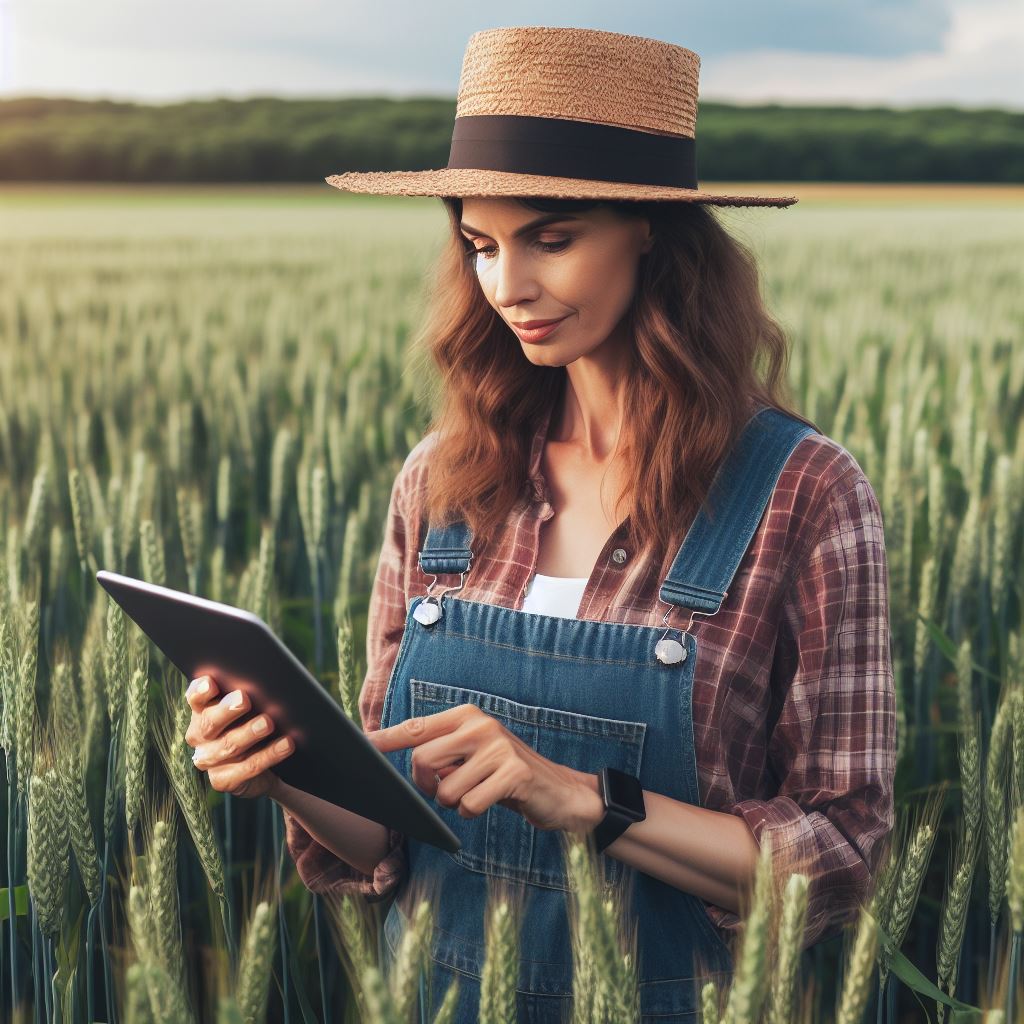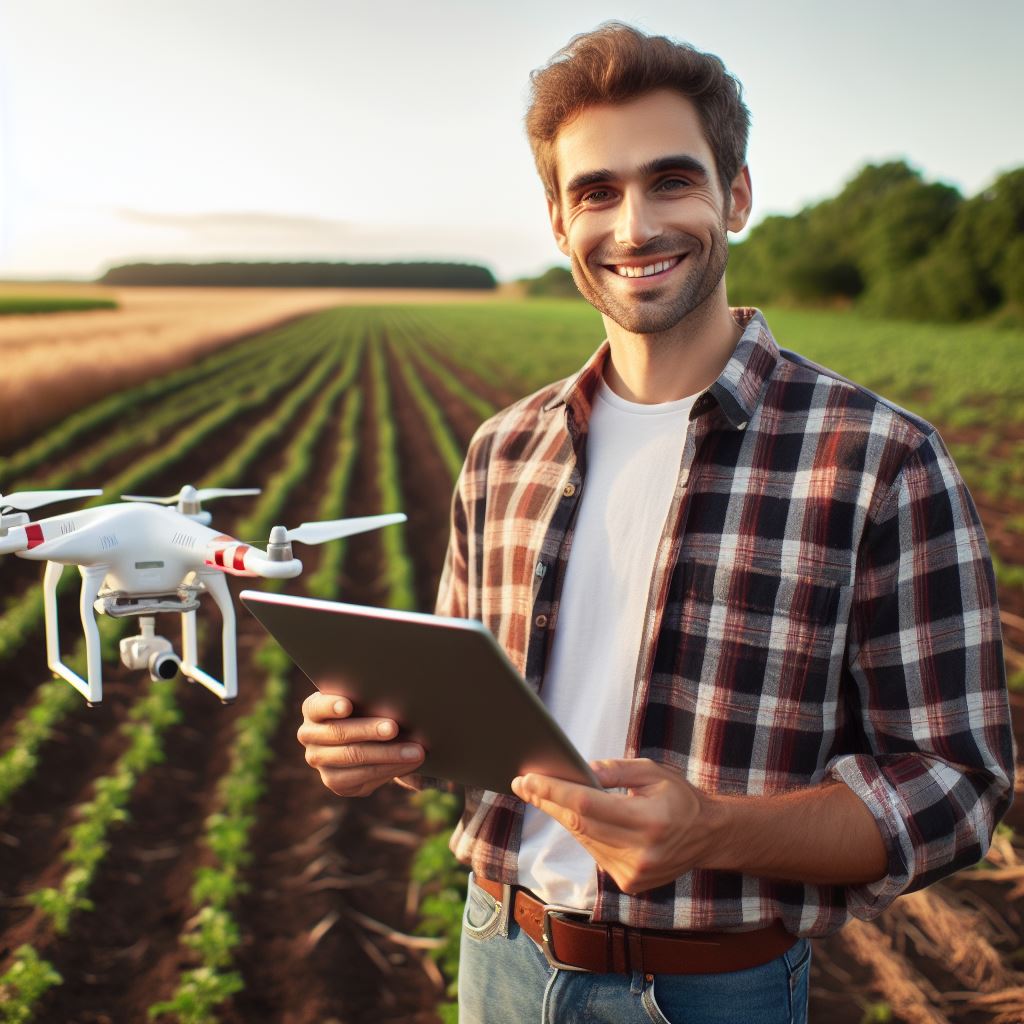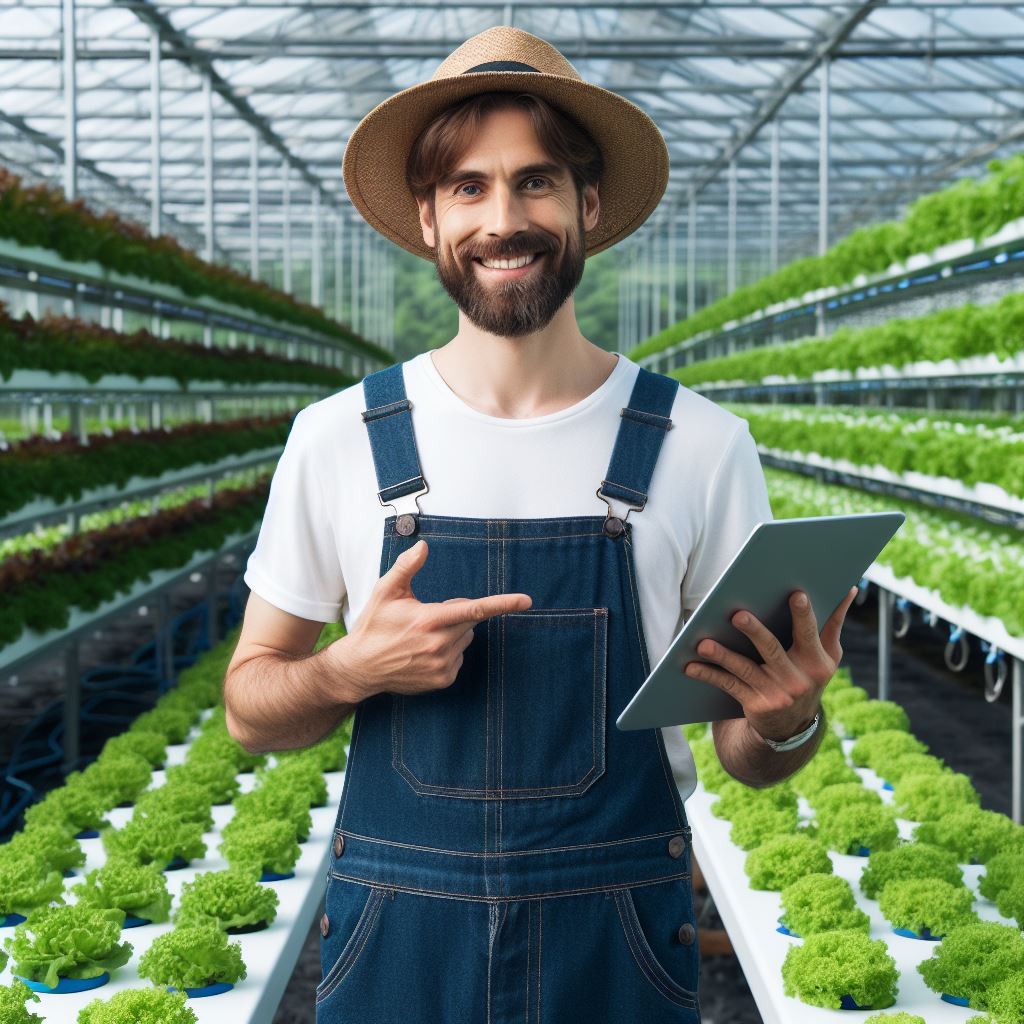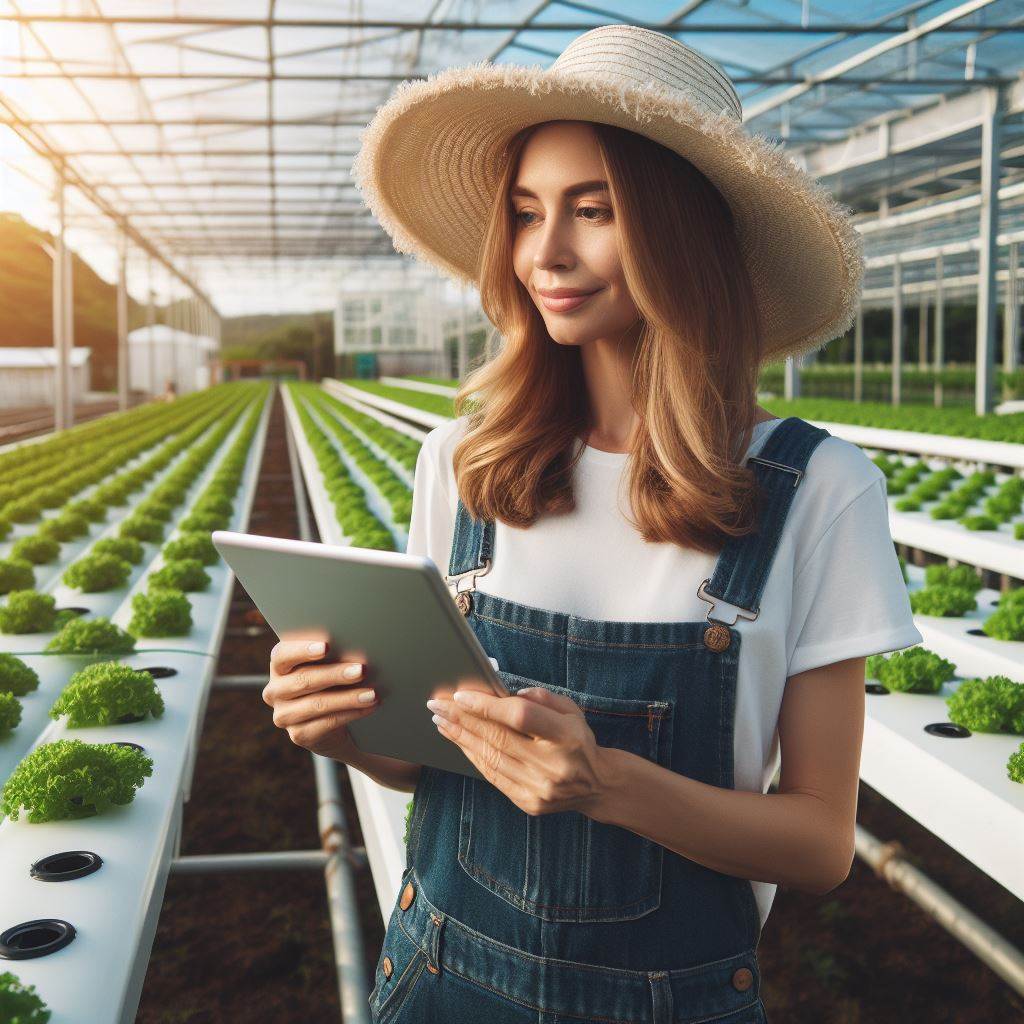Introduction
Drones are revolutionizing agriculture by enhancing crop efficiency.
In this blog post, we delve into how drones can achieve this objective.
Drones are unmanned aerial vehicles that have found their way into various industries, including agriculture.
As technology advances, these robotic devices are becoming increasingly crucial in boosting crop productivity.
The purpose of this blog post is to explore the ways in which drones can enhance crop efficiency.
By examining their different applications and benefits, we aim to shed light on the potential impact of drones in agriculture.
One key advantage of drones in agriculture is their ability to provide farmers with valuable data.
Equipped with sensors and cameras, drones can collect real-time information on crop health, water levels, and nutrient needs.
By analyzing this data, farmers can make informed decisions regarding irrigation, fertilizers, and pest control, resulting in enhanced efficiency and reduced resource wastage.
Moreover, drones can be used for precision agriculture, enabling farmers to target specific areas of their fields that require attention.
By delivering inputs only where needed, such as pesticides or fertilizers, drones minimize unnecessary applications and save costs.
With the ability to cover large areas quickly and easily, drones also save farmers valuable time and effort.
Instead of walking through fields, farmers can monitor their crops efficiently from a central location.
This enables them to detect issues early on and take timely action.
Basically, drones have emerged as powerful tools in boosting crop efficiency.
Transform Your Agribusiness
Unlock your farm's potential with expert advice tailored to your needs. Get actionable steps that drive real results.
Get StartedTheir ability to provide valuable data, enable precision agriculture, and save time makes them an invaluable asset for farmers.
By embracing this technology, agriculture can become more sustainable, productive, and economically viable.
Benefits of using drones in agriculture
Enhanced crop monitoring
Drones have become increasingly popular in the agricultural industry due to their numerous benefits.
One major advantage is the enhanced crop monitoring capabilities they offer.
With drones, farmers can collect real-time data on crop health and growth, allowing them to identify areas of concern or potential diseases.
This enables them to take timely actions to address any issues and ensure optimum yields.
Precision agriculture
Another advantage of using drones in agriculture is precision agriculture.
Drones allow for targeted application of fertilizers, pesticides, and water, minimizing wastage and maximizing resource efficiency.
This not only helps in improving crop health but also reduces the negative environmental impact associated with excessive use of chemicals.
Improved crop scouting
Crop scouting is another important aspect of farming, and drones have proven to be invaluable in this area.
Drones can efficiently survey large areas of farmland, providing a comprehensive view of the entire field.
They can quickly detect problem areas, such as pest infestations or nutrient deficiencies, enabling farmers to take necessary actions promptly.
This helps in preventing the spread of diseases or pests, ultimately leading to better crop management.
Time-saving and cost-effective
One of the significant advantages of using drones in agriculture is the time and cost savings they offer.
Drones can replace manual labor for various tasks, such as inspecting crops or spraying pesticides.
This not only saves time but also reduces the labor costs associated with these activities.
Additionally, drones eliminate the need for manual inspection and monitoring, which can be labor-intensive and time-consuming.
Overall, the use of drones in agriculture results in significant cost savings for farmers.
Generally, the benefits of using drones in agriculture are numerous.
From enhanced crop monitoring to precision agriculture and improved crop scouting, drones offer valuable insights and help optimize resource utilization.
Moreover, they save time, reduce costs, and contribute to sustainable farming practices.
It is clear that drones have the potential to revolutionize the agricultural industry and significantly boost crop efficiency.
Read: Precision Agriculture: How Drones Change the Game
Types of Drones Used in Agriculture
In the world of agriculture, drones have emerged as a game-changer, boosting crop efficiency and revolutionizing farming practices.
Showcase Your Farming Business
Publish your professional farming services profile on our blog for a one-time fee of $200 and reach a dedicated audience of farmers and agribusiness owners.
Publish Your ProfileDifferent types of drones are used for various agricultural purposes, each offering unique advantages and functionalities for farmers.
Fixed-wing Drones
Fixed-wing drones are designed to resemble airplanes, with their wings enabling them to stay airborne and cover large areas quickly.
These drones are equipped with heavy cameras and sensors, enabling them to capture high-resolution images and collect data for analysis.
Their functionality is highly suitable for surveying vast agricultural lands, mapping topography, and monitoring crop health.
With their ability to carry heavier equipment, fixed-wing drones can capture detailed images and gather precise data.
Multi-rotor Drones
Multi-rotor drones, on the other hand, are characterized by their ability to hover in place and maneuver with agility, making them ideal for operations in tight spaces.
These drones have multiple rotors that provide stability and enable them to take off and land vertically.
Multi-rotor drones are commonly used for tasks such as crop scouting, pest detection, and real-time monitoring.
Their maneuverability allows farmers to closely inspect individual plants, identify potential issues, and apply targeted interventions efficiently.
Hybrid Drones
Hybrid drones combine the features of fixed-wing and multi-rotor drones, offering versatility in fulfilling different agricultural requirements.
These drones can take off and land vertically like multi-rotor drones while also being capable of flying long distances like fixed-wing drones.
This combination of capabilities makes hybrid drones useful for various farming needs, such as field inspections, precision agriculture, and even package delivery.
Farmers can use them to cover large areas quickly and then transition to close-range monitoring when necessary.
Other Specialized Drones Used in Agriculture
In addition to the three main types mentioned above, there are several other specialized drones used in agriculture.
These include:
- Crop Dusting Drones: Equipped with spraying systems, crop dusting drones can efficiently apply fertilizers or pesticides to crops, reducing the reliance on traditional ground-based spraying methods.
- Pollination Drones: With the decline in natural pollinators, pollination drones are being developed to mimic the process and help pollinate flowers, ensuring proper crop reproduction.
These specialized drones offer innovative solutions to specific agricultural challenges, promoting efficiency and sustainability in farming practices.
Essentially, drones have become invaluable tools in modern agriculture.
Fixed-wing drones cover large areas quickly, multi-rotor drones maneuver in tight spaces, and hybrid drones provide versatility.
Specialized drones like crop dusting and pollination drones cater to specific farming needs.
As technology continues to advance, drones will only play a bigger role in boosting crop efficiency and revolutionizing agriculture as a whole.
Read: Drones in Agriculture: The Future of Farming
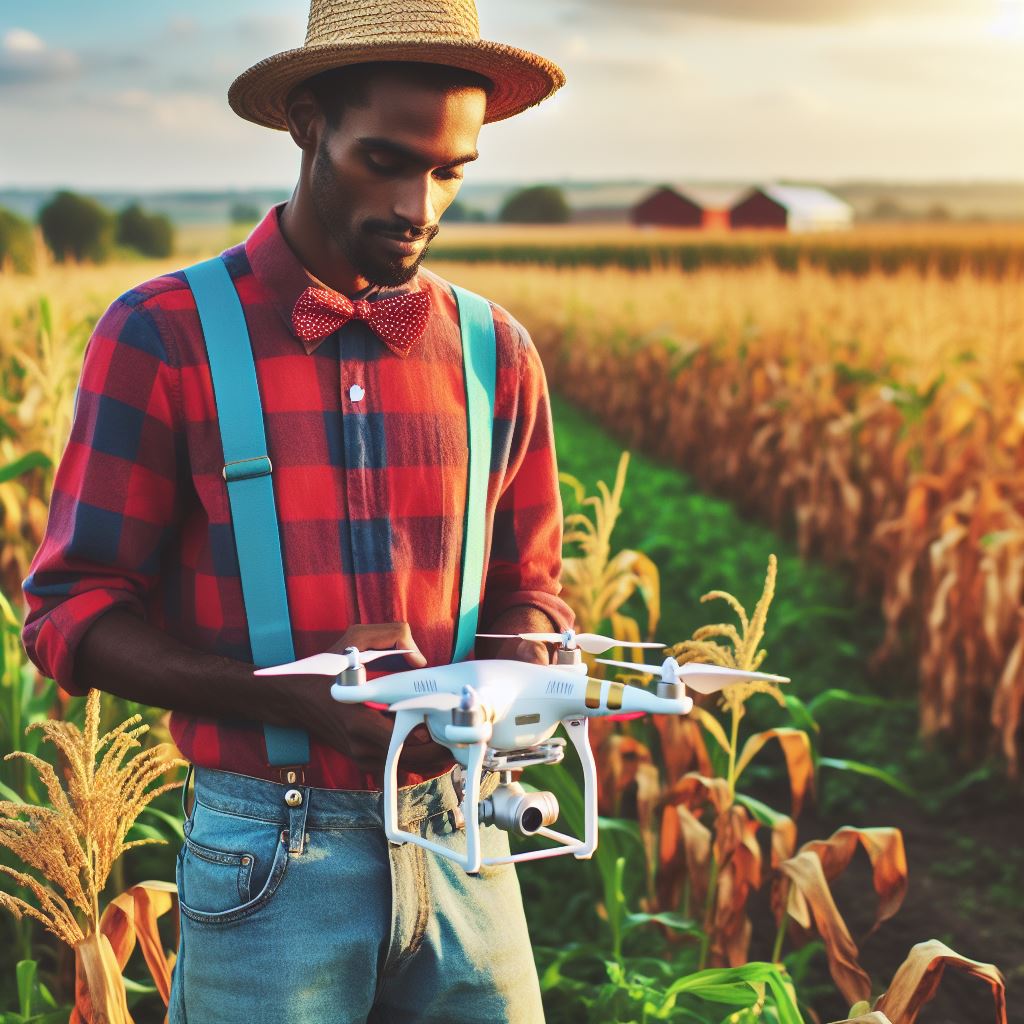
Examples of drone applications in agriculture
Drones have become increasingly popular in agriculture due to their ability to improve crop efficiency.
Crop health assessment
One of the main applications of drones in agriculture is crop health assessment.
- Multi-spectral cameras attached to drones can analyze plant health indicators.
- This technology allows for the identification of nutrient deficiencies, pest infestations, and diseases.
Crop spraying
Another important use of drones in agriculture is crop spraying.
- Drones equipped with pesticide or fertilizer sprayers can accurately apply chemicals to crops.
- This targeted application results in reduced chemical usage and environmental impact.
Crop mapping and yield estimation
Drones are also valuable for crop mapping and yield estimation.
- By capturing high-resolution images, drones can create detailed maps of fields.
- Software analysis can then estimate crop yield and identify any variations across the field.
Livestock monitoring in large farms
Additionally, drones can significantly enhance livestock monitoring in large farms.
- They can assist in managing and monitoring livestock by tracking their movements.
- Drones can also be used to check for injuries or count the herd more effectively.
In general, drones have revolutionized agriculture by boosting crop efficiency through various applications.
Read: Revolutionizing Farms: Drones in Crop Monitoring
Challenges and Potential Concerns
Drones have the potential to revolutionize agriculture by boosting crop efficiency, but there are several challenges and potential concerns that need to be addressed.
Regulatory Issues
One major challenge is the regulatory issues surrounding the use of drones in agriculture.
Appropriate regulations and certifications are necessary to ensure the safe and responsible use of drones.
Regulators need to consider the aspects of safety, privacy, and responsible drone usage when creating these regulations.
Initial Investment and Training
Another challenge is the initial investment and training required.
Farmers need to purchase drones, which can be costly.
They also need to invest in maintenance and repairs.
Additionally, efficient drone operation requires proper training and expertise.
Farmers need to acquire the skills necessary to operate drones effectively.
Limited Battery Life and Flight Range
Limited battery life and flight range are limitations of current drone technology.
Drones can only operate for a limited amount of time before they need to recharge.
Furthermore, the flight range of drones is often limited.
Showcase Your Farming Business
Publish your professional farming services profile on our blog for a one-time fee of $200 and reach a dedicated audience of farmers and agribusiness owners.
Publish Your ProfileThese limitations need to be addressed to ensure drones can cover larger areas and operate for longer periods.
Public Perception and Acceptance
Public perception and acceptance of drones in agriculture is another potential concern.
Some individuals may have concerns about the use of drones, fearing privacy infringement or potential safety risks.
These concerns need to be addressed by educating the public about the benefits and sustainability of drone usage in farming.
Emphasizing how drones can improve crop efficiency and reduce the need for harmful pesticides can help change public perception.
In essence, while drones have the potential to significantly boost crop efficiency in agriculture, there are challenges and potential concerns that need to be overcome.
Regulatory issues, initial investment and training, limited battery life and flight range, as well as public perception and acceptance all need to be addressed for the widespread adoption of drones in agriculture.
By addressing these concerns, farmers can harness the full potential of drones and enhance their crop production processes.
Read: Drones in Agri: Irrigation Game Changer
Conclusion
The use of drones in agriculture has proven to be highly advantageous for boosting crop efficiency.
By providing farmers with real-time data, drones enable them to make informed decisions and take swift actions.
Drones have diverse applications in different farming tasks.
They can be used for crop monitoring, field mapping, crop spraying, and even livestock management.
This versatility makes drones an essential tool in modern agriculture.
It is important to encourage further adoption and research in drone technology for maximizing agricultural yield and sustainability.
By embracing this technology, farmers can improve their productivity, reduce resource wastage, and minimize environmental impact.
In a nutshell, drones have revolutionized the agricultural industry by offering a new level of precision and efficiency.
As drone technology continues to advance, it is crucial for farmers, researchers, and policymakers to explore its full potential and identify innovative solutions for sustainable farming.

